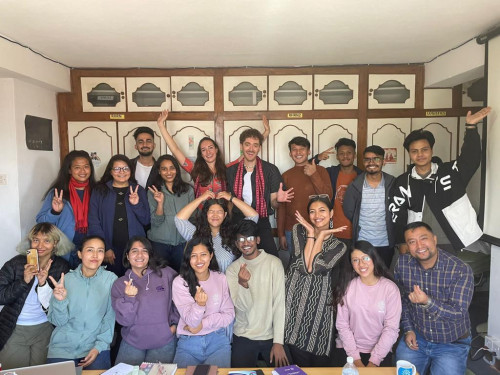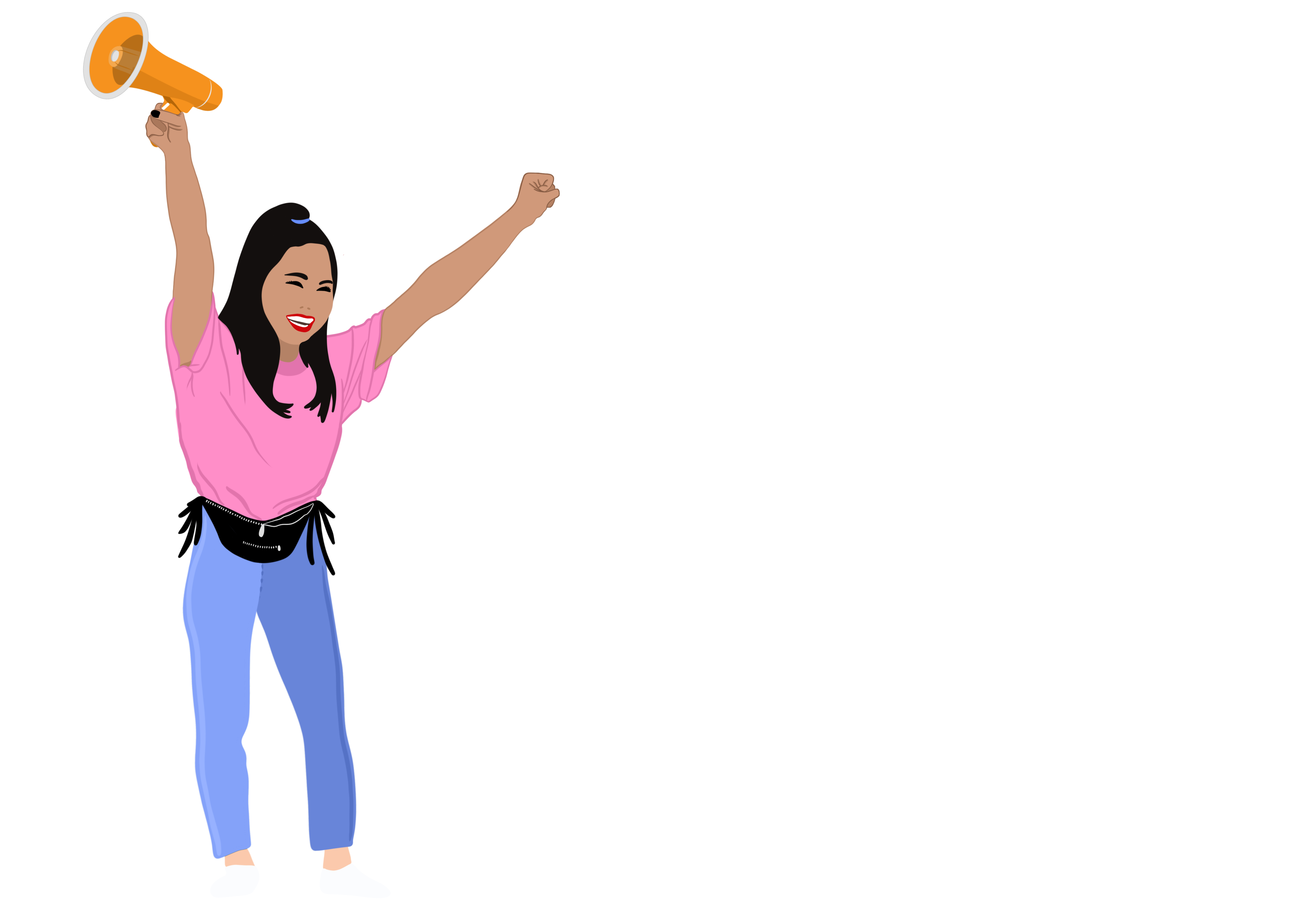Youth Ambassadors Jim and Laura Visit Kathmandu, Nepal
By Jim Monkel - Youth Ambassador SRHR, Gender Equality, and Bodily Autonomy

I have been Youth Ambassador for three months now. I started off with a flying start: I have met so many (young) people, activists and organizations, and learned so much about all different aspects and perspectives of both meaningful youth participation and sexual and reproductive health and rights! Three months in to my ambassadorship makes it the perfect time to look back at a big highlight: Traveling to Kathmandu, Nepal!
Before I start writing about my experiences in Nepal, I will provide a short introduction of myself. My name is Jim Monkel, I am 24 years old, and I recently graduated for my Masters in International Public Health. Being part of the LGBTQ+-community and growing up with a brother with an intellectual disability, made me realize from an early age on that it doesn’t have to be self-evident(1) to enjoy your sexual and reproductive health and rights. For this reason, I decided to put my focus on meaningful youth participation and inclusive comprehensive sexuality education (CSE), specifically for youth living with disabilities.
Now I would like to look back at one of my big highlights of the last three months; visiting Kathmandu, Nepal in October 2022, together with former Youth Ambassador, Laura Bas. As Youth Ambassador, you amplify voices from young people all over the world to make sure that policies from the Dutch Ministry of Foreign Affairs align with the lived realities of these young people. This visit to Kathmandu has been a great opportunity for me to get to speak with many different young people, activists and organizations from Nepal. Through hearing the stories of the lived realities of young people, Laura and I gained a better understanding of relevant SRHR issues in Nepal. Based on the recommendations from the youth, we will advise the Dutch Ministry of Foreign Affairs where they can align their policy more to the realities of young people all over the world. Below, I will dive deeper into three important issues, as seen by young people:
Progressive policies vs conservative social norms
The most important issue young people mentioned entailed the discrepancy of progressive policies but lack of implementation: Nepal is characterized by progressive policies on gender equality and SRHR, but struggles with implementing these policies due to strong conservative cultural and religious norms, taboos and persuasive gender norms. An example of this, is that abortion up to 12 weeks – in case of rape or incest up to 28 weeks- is legal(2). However, people do not use these services, because ‘the policies are faster than the people’. Strong social, cultural and religious norms lead to stigmatization, which results in people refraining to make use of these (progressive) services. Besides the social norms, the policies are also very focused on the design and infrastructure of services, instead of on changing social norms and traditions. In order for people to break this social stigma, it is important that they have knowledge about their sexuality and sexual rights and feel empowered, to live their lives as they want. So, to make sure that people start using these services, focusing on changing social norms and beliefs and addressing empowerment is needed – this can be done by inviting and sensitizing religious leaders and community figures.
More spaces and stages for youth to share their voice and economic empowerment
There is a great need for more platforms for young people to share their voice. Young people shared with us that when they were able to participate in SRHR programs, they do not have any platform to spread and share their knowledge afterwards. By giving young people more platforms and spaces to share their (newly learned) insights and messages, other young people could learn from them.
When we visited organizations like UNFPA3 and X-pose4, there was a strong indication that economic empowerment is key to make progress on SRHR. X-pose Nepal started teaching women how to make reusable menstrual products, as part of a program to prevent gender-based violence, and hire them to make these products for them. In this way, women could be financially independent, which helped them to break the cycle of violence they faced. In addition, young people indicated that having knowledge about bodily autonomy and sexual rights is important but that it was difficult to have these rights, when basic needs such as food and housing are not met. It was insightful for Laura and I to see how integrating economic empowerment within SRHR creates space for people to exercise their SRHR.
Inclusive Comprehensive Sexuality Education
Lastly, we spoke to young people from the Blind Youth Association Nepal (BYAN)5. They mentioned that young people living with disabilities do not have equal access to appropriate CSE materials as young people without disabilities. This shortcoming of accessible and appropriate CSE, results in lack of knowledge about SRHR and limitations to know and claim your rights. People with hearing impairments for example, were not able to receive information because there is no ‘CSE specific sign language’ - something that BYAN is working on improving. When more countries and UN agencies, supported by international agreements, include accessibility for young people with disabilities in their CSE this will empower them to be knowledgeable about sex and sexuality and enhance them to know and claim their rights.
This visit to Kathmandu inspired and motivated me even more to advocate for sexual and reproductive health and rights during my term as Youth Ambassador. This visit also showed me the importance of young people being heard and of Inclusive Comprehensive Sexuality Education. No one should be left behind, and everyone should be able to know and claim their sexual and reproductive rights!
1) Often people with a disability are seen as asexual (I.e., they are not interested in sex) or hypersexual. In care settings and facilities many choices are made for young people with a disability by their care takers or parents, and as some people with a disability need help with physical functions, it is difficult for them to distinguish between ‘good touch’ and ‘bad touch’. This is to name a few examples.
2) Recognized Yet Limited: Abortion Rights in Nepal: Gaps in Access and Equity Pose Challenges to Reproductive Rights https://www.hrw.org/news/2022/06/13/recognized-yet-limited-abortion-rights-nepal
3) UNFPA Nepal website: https://nepal.unfpa.org/
4) X-Pose Nepal website: https://www.xposenepal.org.np/
5) BYAN website: http://www.byanepal.org/




 Previous News article
Previous News article